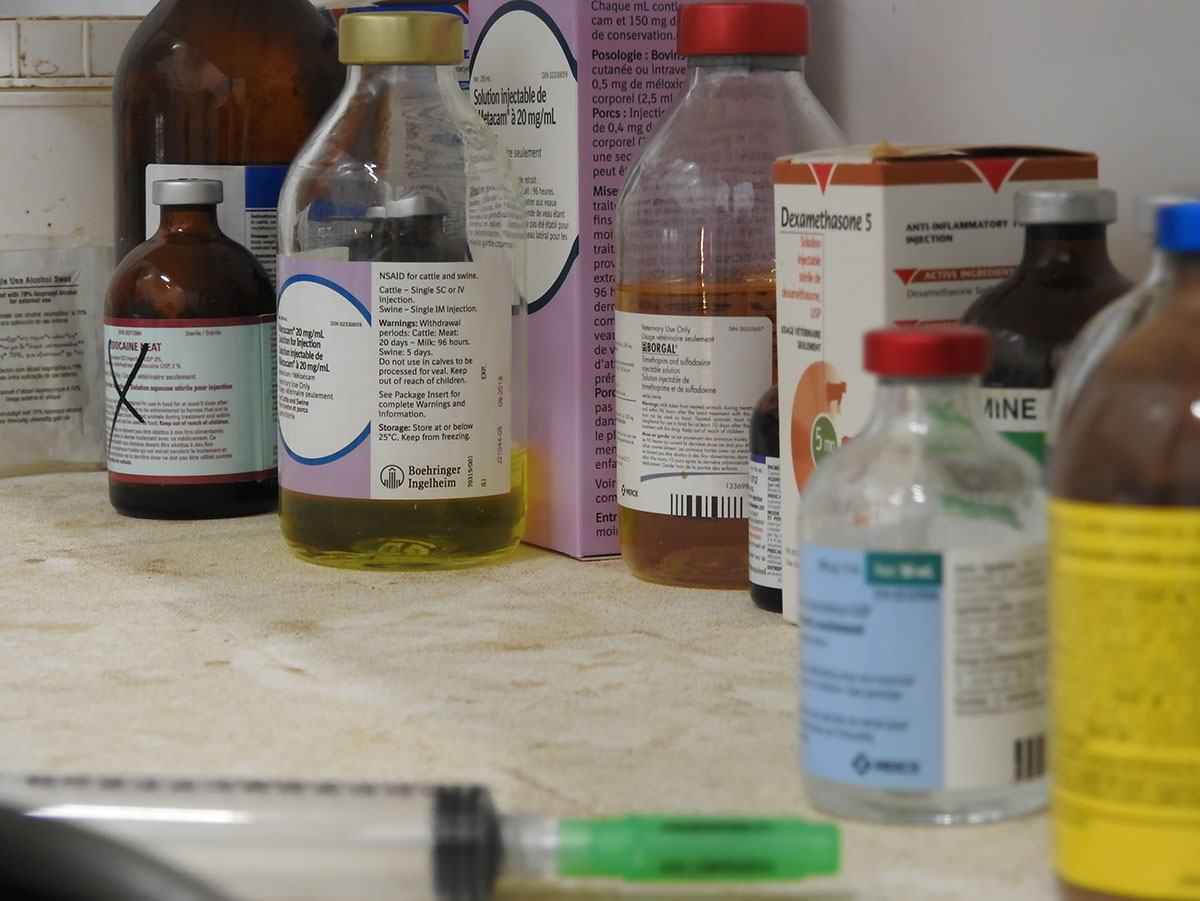Section 3 | Bovine Respiratory Disease in Feedlots
Page 14 /
Treating Bovine Respiratory Disease
Antmicrobial medications are a necessary tool to treat calves that have BRD. Choosing the right antimicrobial will lead to the best response and will reduce relapses and death following initial treatments.
There are many antimicrobial medications labelled for treating BRD. A recent review studied which antimicrobials are the most and least effective at treating BRD. The review found that florfenicol, tulathromycin, enrofloxacin, and danofloxacin have similar efficacy in BRD treatment21. However, we must consider how important these drugs are in treating human disease before treating animals for BRD, as use can lead to the development of antimicrobial resistance. Enrofloxacin and danofloxacin are Category I antimicrobials – drugs that are of high importance to human medicine. If they fail, there is nothing else to treat serious infections in humans. Thus, they should not be used as a first-line treatment, considering that Category II (tulathromycin) and III (florfenicol) have similar effectiveness and should be used first.

Source: ACER Consulting Ltd.
Work with your veterinarian to develop a protocol on how to handle and treat BRD cases, including “relapse” animals that didn’t respond to initial therapy. Be sure to consider the categorization of these antimicrobials when creating the protocol; its important to find the right drug, for the right condition, at the right dosage. Preferentially use antimicrobial medications that are of low importance to human medicine as first-line treatments. Using antimicrobials of greater importance in humans should be reserved for treating relapse cases. If mass medication is used when cattle arrive at the feedlot, it is also important to consider that an antimicrobal therapy may be less effective if used for a subsequent treatment.
The use of nonsteroidal anti-inflammatories (NSAIDs) are commonly recommended in combination with an antimicrobial medication when treating BRD. Some studies have identified that the use of NSAIDs reduces rectal temperature and lung damage in animals with BRD. One study also noted improved growth in animals following use of NSAIDs in conjunction with antimicrobial therapies to treat BRD. However, more research is necessary to concretely determine the effect of NSAIDs on short- and long-term health and performance22.
References
- O’Connor, A.M., Yuan, C., Cullen, J.N., Coetzee, J.F., da Silva, N., and Wang, C. 2016. A mixed treatment meta-analysis of antibiotic treatment options for bovine respiratory diseases – An update. Prev. Vet. Med. 132: 130-139
- Francoz, D., Buczinski, S., and Apley, M. 2012. Evidence Related to the Use of Ancillary Drugs in Bovine Respiratory Disease (Anti-Inflammatory and Others): Are They Justified or Not? Veterinary Clinics of North America Food Animal Practice. 28(1): 23-28.